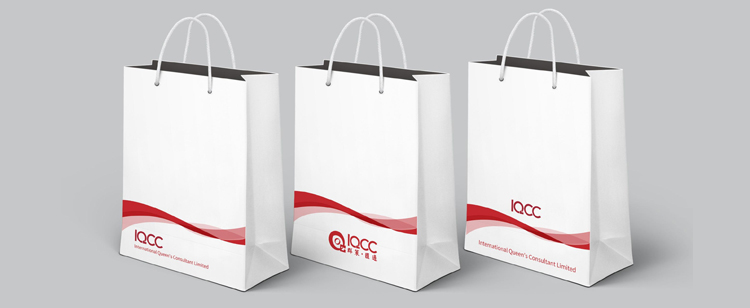Bags, as the name suggests, are bags that are used to hold items and are easy to carry. Its carrying function determines its material and form, and can be roughly divided into portable paper bags, plastic bags, cloth bags, small baskets and small baskets of wide sense according to the materials used. The most common and frequently used ones are paper composite bags and plastic bags, followed by cloth bags, and small baskets and small baskets are rare in metropolitan areas.
Handbag
Most of the paper bags are made of heavy kraft paper, white cardboard, gray-white cardboard, white-white cardboard, and copper cardboard, and are printed, die-cut, glued, and formed by an offset printing press. Due to the modernization of printing technology and equipment, the printing patterns are exquisite, exquisite, and rich in expression forms. All the techniques in modern printing can be represented on a small handbag, such as bronzing, bumps, UV, and die-cut shapes.
Due to the difference in materials, the stiffness and toughness of the kraft paper are better, the surface is relatively rough, and the background color is generally not suitable for 4-color printing, and only some monochrome printing is not needed, and the production cost is not 1.5 yuan (outside). Kraft paper bag should pay attention to the use of good quality glue in adhesive molding, otherwise there will be the phenomenon of bottoming and bursting. At the same time, degumming may also occur if the kraft paper bag is left for too long. White cardboard, gray white cardboard, white white cardboard and copper cardboard all have a common feature. The surface is delicate and white. It is suitable for four-color printing and can print very fine patterns, due to the paper itself. Toughness and water-resistance characteristics, usually after the printing are all coated on the surface (BOPP film, also known as biaxially oriented polypropylene film, said paper bag is a paper-plastic composite bag), increasing its toughness and water resistance, Normally, the degumming process does not occur in the handbags after the film treatment. The production cost is between 1.3 and 2.0 yuan. The cost of the copper cardboard handbag is the highest, followed by the white cardboard handbag, the gray white cardboard handbag and the white white cardboard handbag. .
Plastic bags
Plastic bags are divided into ordinary plastic bags and biodegradable plastic bags depending on the materials used. The thickness of plastic shopping bags provided by general farmers markets is about 0.005 millimeters. The thickness of plastic shopping bags provided by large supermarkets and shopping malls is generally between 0.015 mm and 0.020 mm. Currently, more than 80% of the plastic shopping bags in the market cannot reach 0.025 mm in thickness. Plastic limit standard. After limited plastic, large supermarkets and shopping malls have paid for using plastic shopping bags, and malls also use biodegradable plastic bags.
Cloth bag
The cloth bags can be classified into textile cloths and non-woven cloths depending on whether the materials used need to be woven. Textile cloth is divided into plant fiber cloth and chemical fiber cloth and blended cloth; non-woven cloth is usually called non-woven cloth, and the English name is Non Woven, which is a kind of non-woven cloth, which is directly using high polymer chips, short fibers or filaments. Fibers are airlaid or mechanically meshed, then hydroentangled, needle punched, or hot rolled, and finally the finished nonwoven fabric has a soft, breathable new fiber product. The advantage is that fiber lint is not generated, tough and durable. It is silky and soft, but also has a cottony feel. Compared to cotton fabrics, non-woven fabric bags are easy to shape and cheap.
Textile cloth bags use cotton, canvas, polyester-cotton cloth, Oxford cloth and other materials. These fabrics have a rough surface and cannot be directly fine-printed. Screen printing or transfer printing is often used. At the same time, due to the high price of raw materials, the production of handbags is also more expensive.
Small baskets and baskets
Small baskets and small baskets are mostly made of bamboo, wood and rattan. The carrying articles are strong and durable. They are generally handicrafts, they are expensive, they are not portable, and their output and use are not large.
Add:No.23, Siming Park, Tong’an Industrial
Concentration Zone, Xiamen, Fujian, China
Concentration Zone, Xiamen, Fujian, China

